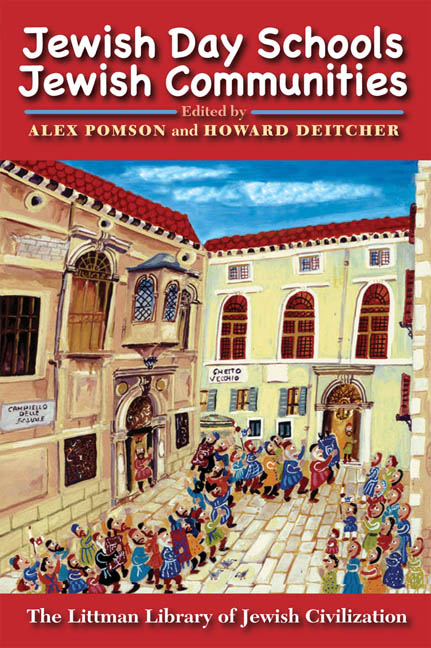Book contents
- Frontmatter
- Dedication
- Acknowledgements
- Contents
- Note on Transliteration
- Introduction: Jewish Schools, Jewish Communities: A Reconsideration
- PART I Insights from Public and General Education
- 1 Building Community Within and Around Schools: Can Jewish Days Schools Measure Up?
- 2 From Control to Collaboration: Mapping School Communities across Diverse Contexts
- 3 Compassionate Conservatism: On Schools, Community, and Democracy
- 4 A Response to Deborah Meier
- 5 Community as a Means and an End in Jewish Education
- PART II Cross-Cultural Insights
- PART III Insights through the Prism of Community
- Contributors
- Index
2 - From Control to Collaboration: Mapping School Communities across Diverse Contexts
from PART I - Insights from Public and General Education
- Frontmatter
- Dedication
- Acknowledgements
- Contents
- Note on Transliteration
- Introduction: Jewish Schools, Jewish Communities: A Reconsideration
- PART I Insights from Public and General Education
- 1 Building Community Within and Around Schools: Can Jewish Days Schools Measure Up?
- 2 From Control to Collaboration: Mapping School Communities across Diverse Contexts
- 3 Compassionate Conservatism: On Schools, Community, and Democracy
- 4 A Response to Deborah Meier
- 5 Community as a Means and an End in Jewish Education
- PART II Cross-Cultural Insights
- PART III Insights through the Prism of Community
- Contributors
- Index
Summary
Introduction
How do schools’ cultures and organizational priorities coalesce to produce particular models of school-community relations? How are these models mapped on to different kinds of schools, including choice ('charter’ and 'magnet’), public or State, and private (independent and religious) schools? What are the implications of the types of relationship formed between families and schools for Jewish day school education worldwide?
This chapter addresses these questions by exploring four different models of school-community relations: co-optation, management, engagement, and coalition. These models are derived from qualitative case studies of public and private schools, including magnet schools, Catholic schools, workplace schools, and neighbourhood schools, located in urban and suburban contexts in the United States. Each model includes four elements that define the nature, quality, and intensity of association between schools and their communities—its goals, functions, relationships, and outcomes —and are reflected in the organizational practices and priorities of the schools.
The Concept of Community
According to contemporary notions of Community, the Community of residence does not reflect the Community of psychological meaning for most families in today's society. Observers distinguish between a concept associated with physical or geographical boundaries and a concept grounded in social structures and social relations. For example, Newmann and Oliver include in their definition the following criteria, each of which is viewed as a continuum and indicative of greater or lesser degrees of community: (1) membership is valued as an end in itself, not merely as a means to other ends; (2) members share commitment to a common purpose; and (3)members have enduring and extensive personal contact with each other. The sense of solidarity, membership, and mutual support that results from community is thought to impact both on the individual, in terms of personal development and social integration, and on the larger society, in terms of social cohesion and stability.
The notion of a school as a community embraces both the communal associations and personal relationships sustained by a school's symbolic and personal dimensions and the more associative relationships driven by the need to accomplish structured activities and maintain particular work relations. The vision of the school as a community portrays adults and students linked to one another by a common mission and by a network of supportive personal relationships that strengthen their commitment to the organization.
- Type
- Chapter
- Information
- Jewish Day Schools, Jewish CommunitiesA Reconsideration, pp. 52 - 70Publisher: Liverpool University PressPrint publication year: 2009

